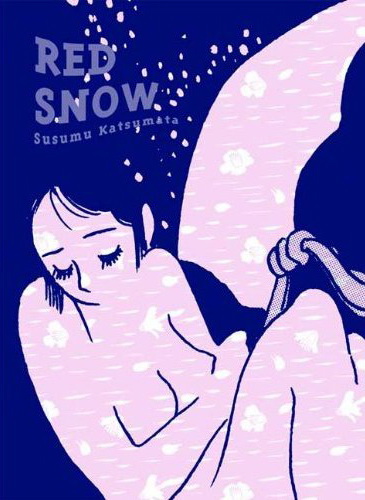10 Sep / Red Snow by Susumu Katsumata, translated by Taro Nettleton

 So indulge me for a reductive semantic moment: ‘serious’ comic books are graphic novels (say, Archie vs. Will Eisner’s A Contract with God and Other Tenement Stories); in Japanese terms, ‘serious’ manga is also known as gekiga.
So indulge me for a reductive semantic moment: ‘serious’ comic books are graphic novels (say, Archie vs. Will Eisner’s A Contract with God and Other Tenement Stories); in Japanese terms, ‘serious’ manga is also known as gekiga.
If you’re interested (otherwise skip to next paragraph), here’s some manga etymology: The word “manga” is made up of two characters: Man means “involuntarily, in spite of oneself,” and ga means “pictures” – together there is the suggestion of making pictures in spite of oneself, as in creating pictures out of a sense of uncontrollable whimsy. The character for man is also used to make up the adjective mida(ri) ni, which happens to be related to a different character that has the same pronunciation and means, among other things, “without reason, arbitrarily, recklessly,” so there is definitely a sense of fun and abandonment. Take the meaning one step further and the midari is also used in midari-gamashii, which means “morally corrupt.” Put that together with ga, and you could get manga equals “bad pictures.” Some might use that as ammunition as to why manga could mistakenly be considered a corruptive force. Not me, of course!
So the term gekiga of the more serious manga variety, was apparently coined by Tatsumi Yoshihiro, who chronicles his portrait-of-a-gekiga-artist’s journey in his autobiographical tome, A Drifting Life.
Red Snow is one of the most recent examples of award-winning gekiga, available for the first time in English (again translated by Drifting Life‘s Taro Nettleton). Comprised of 10 graphic short stories, Susumu Katsumata (who sadly passed away in 2007 a year after he won the coveted 35th Japanese Cartoonist Association Award Grand prize for this collection) captures the stark lives of villagers living in pre-modern Japan, enduring harsh conditions amidst deprivation and isolation as best as possible.
A maturing young girl must fend off raunchy drunken men, a lonely young woman loses her ghost lover who inhabits the doomed chestnut tree, a discarded old woman kills herself rather than be raped one more time, lonely women whose husbands are working far away pass a monk around in a sack every night from house to house, and a dead servant girl raped by her master comes back as a firefly apparition to wreak her revenge on her attacker. In spite of the myriad of hardships and tragedies – made ever starker with the ominous black-and-white shadowy drawings (which, ironically, could be considered R-rated ‘bad pictures’) – Katsumata also manages to infuse moments of humor and even hope.
Readers: Adult
Published: 2009 (United States)

Wow – that actually sounds quite fascinating. I may have to read this one. I’ve never read a serious manga before…
Hey — you’re back! And yes, LOTS and LOTS of serious manga out there! This will be just a beginning for you! Let me know what you think.